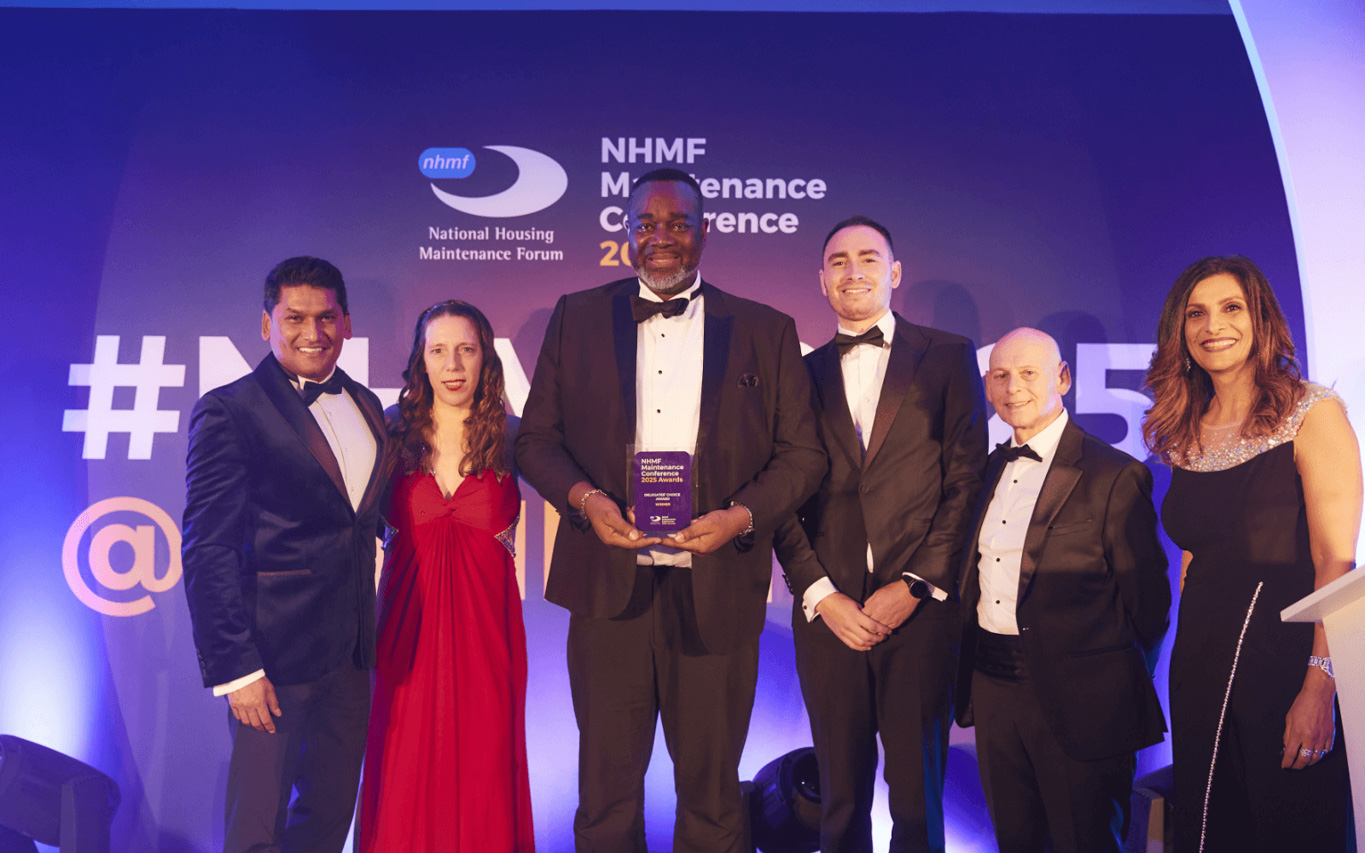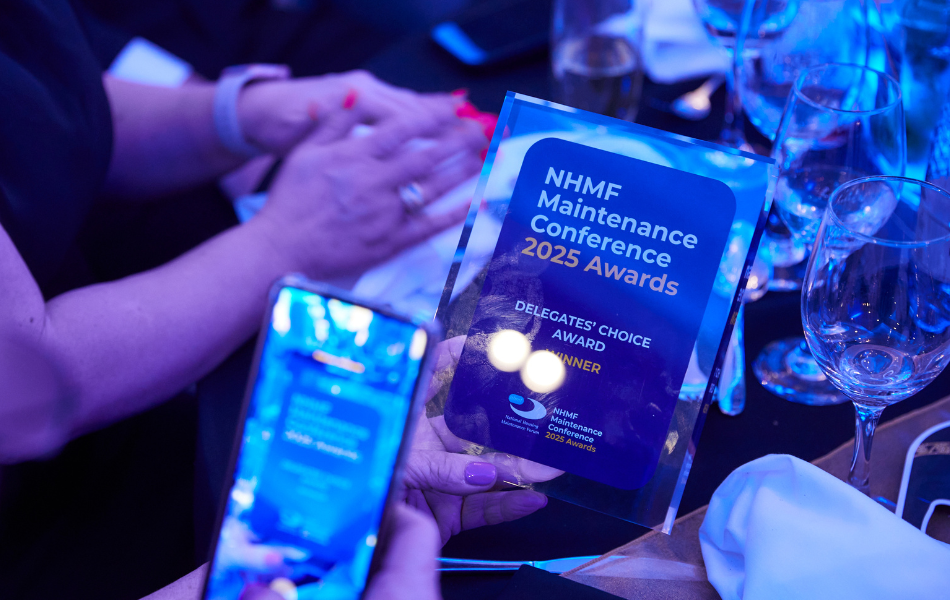NHMF Awards 2025: Delegates’ choice Winner: Southern Housing & Chas Berger
This project used an innovative scaffolding solution to minimise risks to the adjacent railway line so that flat roofs on two high-rise residential buildings could be replaced in order to meet the latest building safety requirements and improve their energy efficiency.

Achievements
This project used an innovative scaffolding solution to minimise risks to the adjacent railway line so that flat roofs on two high-rise residential buildings could be replaced in order to meet the latest building safety requirements and improve their energy efficiency. It had to comply with the latest Building Safety Regulations and also had to minimise visual disruption to train drivers.
What was the project and what was innovative about the service provided?
The George Downing Estate project, completed in August 2024, involved replacing flat roofs on two high-rise residential buildings in Hackney so that the homes would meet the latest building safety requirements and improve their energy efficiency. Its location posed a challenging situation for safe access for the works. An innovative scaffolding solution was required to minimise risks to the adjacent railway line and the scaffold was re-engineered to limit the construction area to a single elevation opposite the railway line. It was critical to comply with the latest Building Safety Regulations and the project involved rigorous safety procedures, including a plate load test to ensure structural integrity and the use of Monarflex sheeting to minimise visual disruption to train drivers.
What were the measurable benefits to the client, the contractor, the resident, and the neighbourhood?
Project’s measurable benefits included enhanced building longevity, durability, and thermal efficiency (improved living conditions and lower energy bills), while reducing future maintenance costs. It complied fully with BSR requirements, protecting Southern from potential legal and regulatory issues and reduced risks of structural failures or leaks. It was delivered within budget and on schedule. Buildings’ improved exteriors provide a more pleasant visual living environment, enhancing residents’ satisfaction and pride in their homes. Careful planning and execution, particularly the measures taken to protect the adjacent railway line, ensured the safety of the broader community. The project supported local employment and invested in the community’s infrastructure, fostering economic growth and stability.
What were the financial costs and measurable cashable benefits over a defined time period?
The project involved several key financial outlays – the material costs of the high-performance felting system and tapered insulation scheme, the skilled labour to remove existing roof coverings and install new systems, and an innovative scaffolding design and safety procedures to minimise risks to the adjacent railway line. In addition, there were the costs associated with meeting BSR requirements, including structural engineering assessments and safety documentation.
Estimated reduction in maintenance costs of £50,000/yr over next 10 years and replacement cost of £100,000 over 20 years by installing durable, high-performance roofing materials. Savings of £20,000 annually in energy costs for residents through improved thermal efficiency. Regulatory Compliance with latest BSR regulations mitigates the risk of fines and legal costs estimated savings of £10,000 annually. The improvements increase the property value by an estimated £200,000, benefiting Southern’s asset portfolio.
How relevant is this as an example that might be followed by other organisations?
While the savings were project specific, the principles are transferable to other sites and shows how other organisations can adopt these innovative approaches to enhance safety in similarly challenging environments. Other organisations can learn from this proactive approach to regulatory compliance, ensuring their projects meet all necessary safety standards and avoid potential legal issues. Using a tapered insulation system to improve thermal efficiency is a practical solution that other organisations can use. The collaborative approach showed the importance of working with relevant stakeholders and other organizations can adopt this model to foster better communication and cooperation among project partners. Other organisations can look to this project as a guide for managing emergency situations and regulatory changes effectively.


